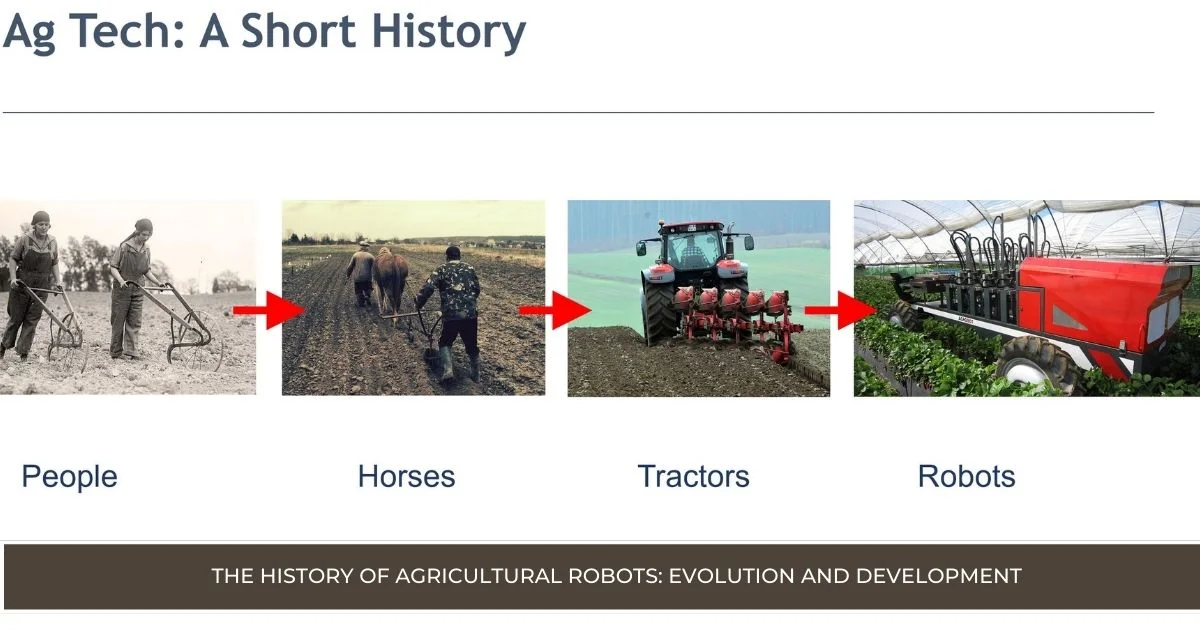The History of Agricultural Robots: Evolution and Development
Introduction
Agricultural robots have transformed farming from a labor-intensive industry to a technologically advanced sector. The history of agricultural robots is a fascinating journey that highlights the integration of technology in farming practices. This article explores the evolution of agricultural robots, from their early beginnings to the latest advancements, and looks at future trends shaping the industry.
Early Beginnings of Agricultural Mechanization
The 19th Century: The Birth of Agricultural Machinery
The journey towards modern agricultural robots began in the 19th century with the advent of agricultural machinery. Before this period, farming relied heavily on manual labor and animal power. The introduction of steam-powered equipment marked the first major shift in farming practices.
Steam-Powered Equipment
Steam engines revolutionized farming by providing a new source of power. Early steam-powered tractors and plows increased efficiency and productivity, allowing farmers to cultivate larger areas of land more quickly than ever before. These machines were the precursors to modern agricultural robots.
Transition to Gasoline and Diesel Engines
As technology advanced, steam engines were gradually replaced by gasoline and diesel engines. This transition in the early 20th century brought more reliable and powerful machinery to farms, further enhancing productivity. The foundation was set for the development of more sophisticated agricultural robots.
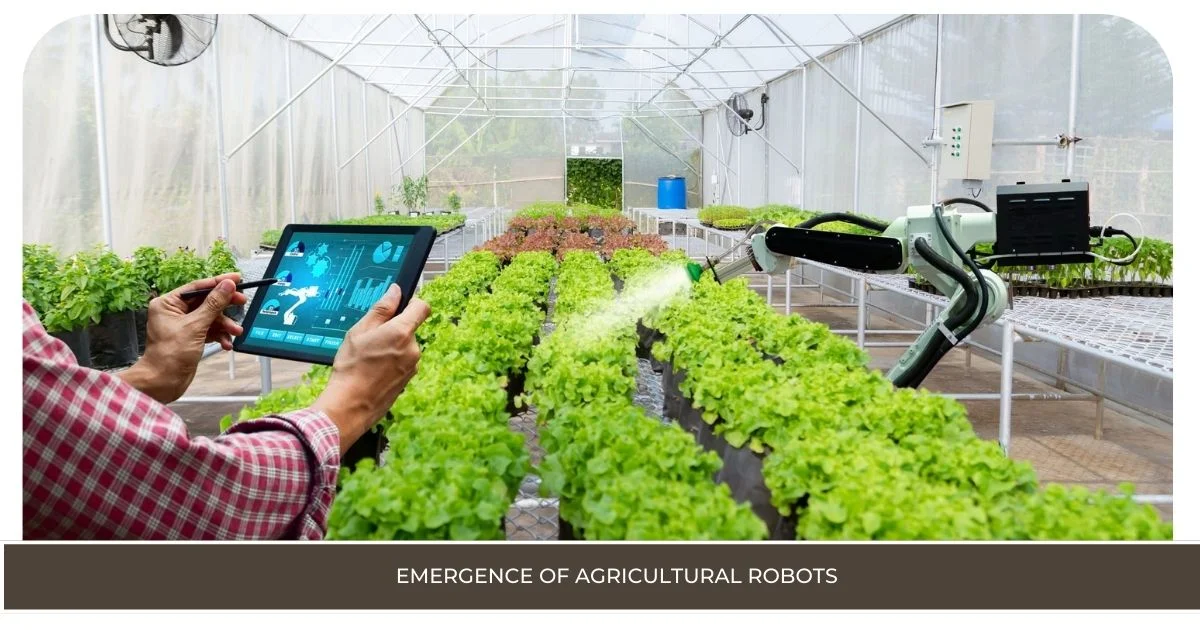
Emergence of Agricultural Robots
Early 20th-Century Innovations
The early 20th century saw the emergence of the first prototypes of agricultural robots. These early machines were rudimentary and faced numerous technical challenges. However, they laid the groundwork for future advancements.
Role of Universities and Research Institutions
Universities and research institutions played a crucial role in the development of agricultural robots. Collaborative efforts between engineers and agricultural scientists led to significant breakthroughs. Research focused on automating tasks such as planting, weeding, and harvesting.
Initial Challenges and Technological Barriers
Early agricultural robots faced many obstacles, including limited computational power, lack of precise control systems, and high costs. These challenges slowed the widespread adoption of robotic technology in farming. However, ongoing research and development efforts gradually overcame these barriers.
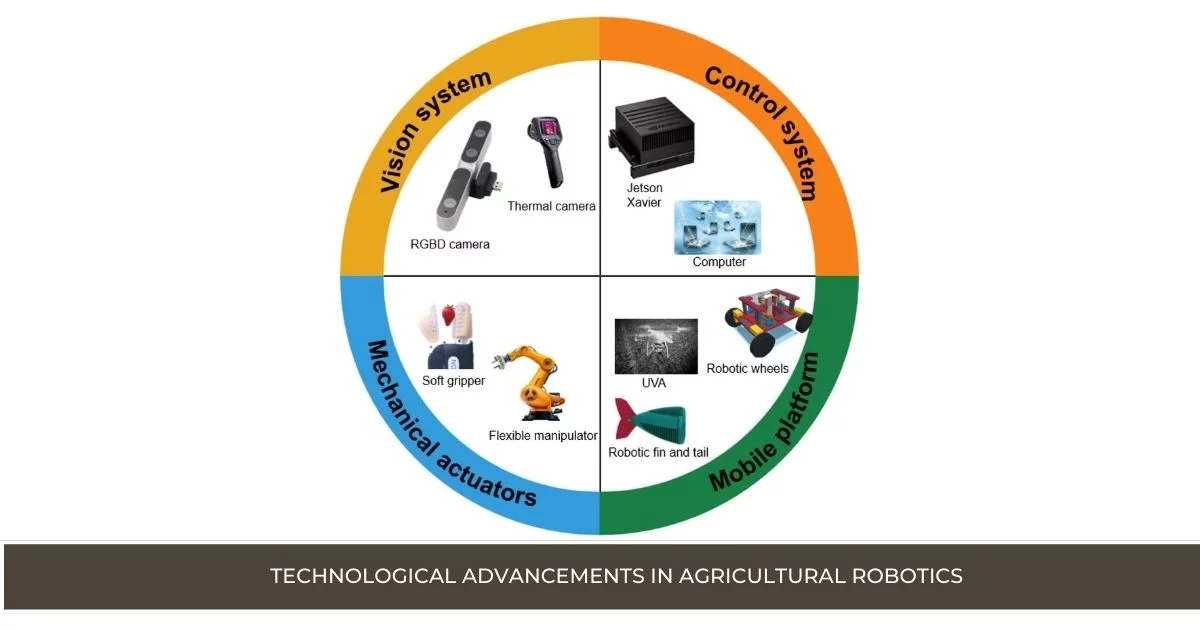
Technological Advancements in Agricultural Robotics
Integration of GPS and Satellite Technology
The late 20th century witnessed the integration of GPS and satellite technology into agricultural machinery. This advancement enabled precision farming, where farmers could optimize field management based on detailed spatial data. GPS-guided tractors and automated planting systems became common.
Rise of Computer Vision and AI in Farming
The rise of computer vision and artificial intelligence (AI) brought new capabilities to agricultural robots. These technologies allowed robots to identify and interact with their environment in sophisticated ways. For example, AI-powered drones could monitor crop health and detect pests or diseases early.
Learn more about precision agriculture and computer vision on Wikipedia.
Milestones: Autonomous Tractors, Drones, and Robotic Harvesters
Significant milestones in agricultural robotics include the development of autonomous tractors, drones, and robotic harvesters. Autonomous tractors can navigate fields without human intervention, using advanced sensors and GPS. Drones provide aerial surveillance and data collection, while robotic harvesters automate the picking of fruits and vegetables.
Check out some examples of autonomous tractors and agricultural drones currently in use.
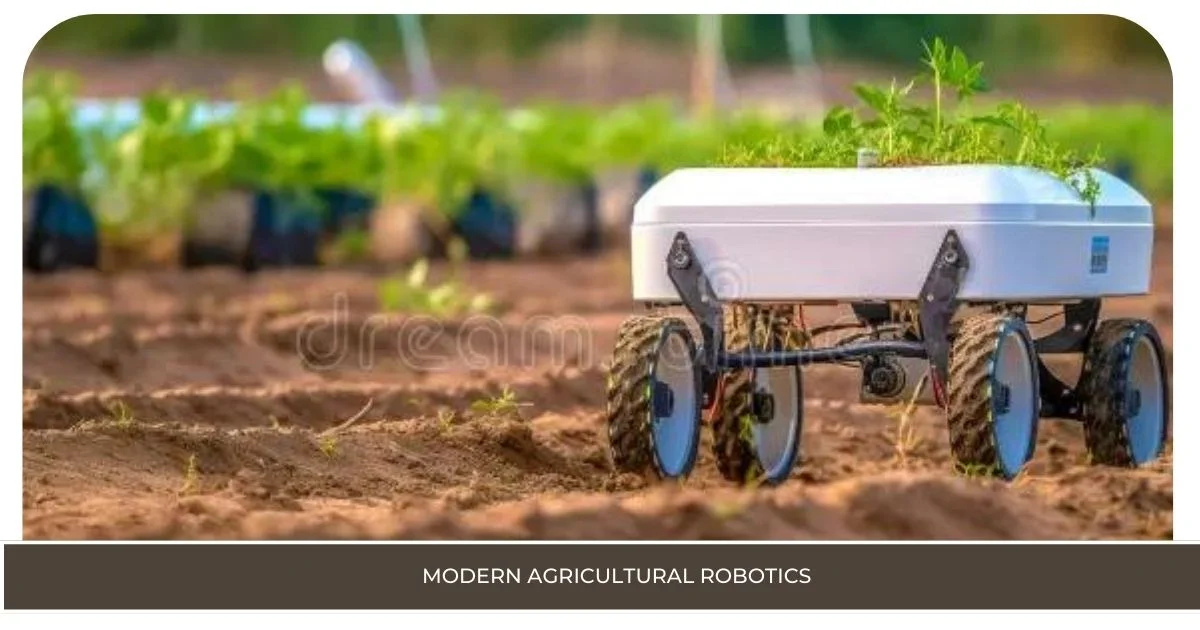
Modern Agricultural Robotics
Current State of Agricultural Robotics: Types and Functionalities
Today, agricultural robotics encompasses a wide range of machines designed for various tasks. Some key types include:
- Autonomous Tractors: These tractors use GPS and sensors to operate without a driver.
- Drones: Equipped with cameras and sensors, drones are used for crop monitoring, spraying, and mapping.
- Robotic Harvesters: These machines can pick fruits and vegetables with precision and speed.
- Weeding Robots: Using AI and computer vision, these robots identify and remove weeds.
Case Studies of Successful Implementations
Several case studies highlight the successful implementation of agricultural robots:
- Case Study 1: Large farms in the Midwest United States have adopted autonomous tractors to reduce labor costs and improve efficiency. These tractors can work around the clock, increasing productivity.
- Case Study 2: Vineyards in France use drones for precision viticulture. Drones monitor vine health, optimize irrigation, and even assist in targeted pesticide application.
- Case Study 3: In the Netherlands, robotic harvesters are used in greenhouses to pick tomatoes and cucumbers. These robots work alongside human workers, increasing overall efficiency and output.
Key Manufacturers and Industry Leaders
Several manufacturers and industry leaders have been at the forefront of agricultural robotics. Companies such as John Deere, AGCO, and Kubota have developed advanced robotic solutions for various farming tasks. Additionally, startups like Blue River Technology and Abundant Robotics are pushing the boundaries of innovation in this field.
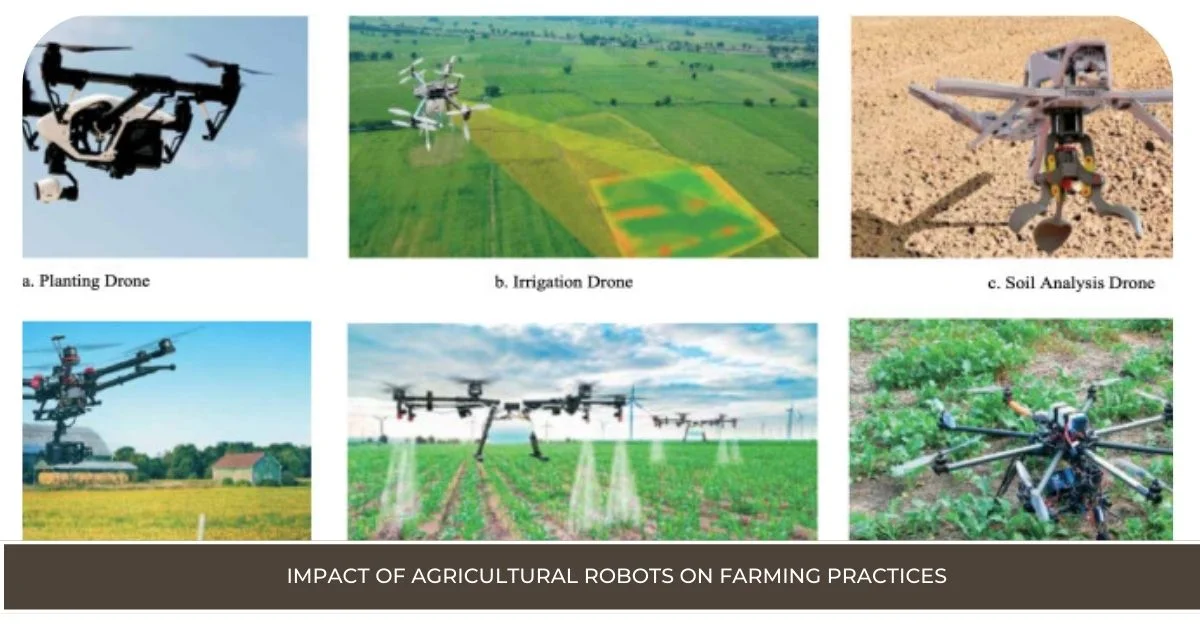
Impact of Agricultural Robots on Farming Practices
Increased Productivity and Efficiency
Agricultural robots have significantly increased productivity and efficiency on farms. Robots can perform repetitive and labor-intensive tasks more quickly and accurately than humans. This allows farmers to focus on more complex and strategic activities, ultimately boosting overall farm output.
Reduction in Labor Costs and Human Error
One of the major benefits of agricultural robots is the reduction in labor costs. By automating tasks such as planting, weeding, and harvesting, farmers can save on wages and reduce the risk of human error. This leads to more consistent and reliable results.
Learn more about the economic impact of agricultural robots from this Forbes article.
Environmental Benefits and Sustainability
Agricultural robots also contribute to environmental sustainability. Precision farming techniques enabled by robotics minimize the use of water, fertilizers, and pesticides. This not only reduces costs but also decreases the environmental impact of farming practices. Additionally, robots can help implement more sustainable farming methods, such as no-till agriculture, which improves soil health and reduces erosion.
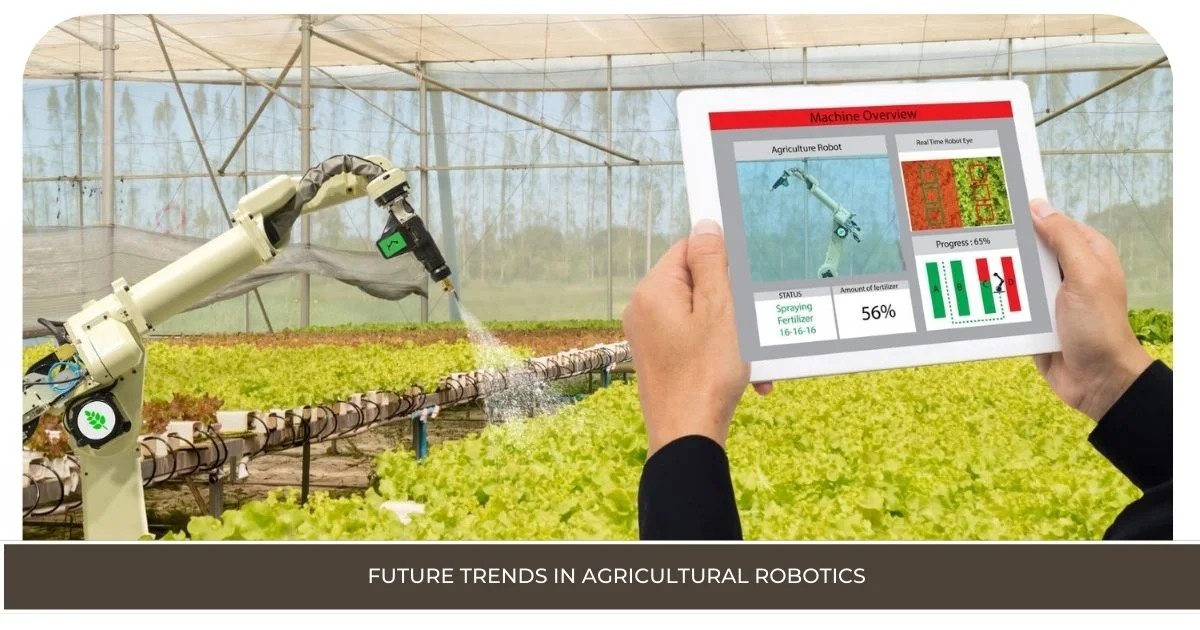
Future Trends in Agricultural Robotics
Innovations on the Horizon: AI, Machine Learning, and IoT
The future of agricultural robotics is poised for even greater advancements. Innovations in AI, machine learning, and the Internet of Things (IoT) are set to revolutionize farming. AI algorithms can analyze vast amounts of data to optimize farming practices, while IoT devices provide real-time monitoring and control of agricultural processes.
Explore more about IoT in agriculture and AI in agriculture.
The Potential Impact of 5G Technology
The advent of 5G technology promises to enhance the capabilities of agricultural robots. With faster and more reliable connectivity, robots can communicate and coordinate more effectively. This will enable more complex and integrated farming systems, further increasing efficiency and productivity.
Predictions for the Next Decade
Over the next decade, agricultural robots are expected to become even more advanced and widespread. Key predictions include:
- Increased Automation: More farming tasks will be automated, from planting and harvesting to sorting and packaging.
- Enhanced Precision: Robots will become more precise in their operations, reducing waste and improving crop quality.
- Greater Accessibility: As technology advances and costs decrease, agricultural robots will become accessible to a broader range of farmers, including small-scale and family-owned farms.
Read about the latest trends in farming technology.
The Role of Robots in Agriculture: Transforming the Future of Farming
Challenges and Considerations
Technical Challenges and Limitations
Despite the advancements, agricultural robots still face several technical challenges. These include:
- Terrain and Weather Conditions: Robots must be able to operate in diverse and sometimes harsh environmental conditions.
- Power Supply: Ensuring a reliable and long-lasting power supply for robots remains a challenge, especially in remote areas.
- Interoperability: Integrating different robotic systems and ensuring they work seamlessly together is crucial for the success of automated farming.
Economic and Ethical Considerations
The adoption of agricultural robots also raises economic and ethical considerations. While robots can reduce labor costs, they may also lead to job displacement for farmworkers. It is essential to consider the social impact and develop strategies to support workers transitioning to new roles.
For a deeper look into the ethics of robotics in agriculture, visit this Technology Review article.
Importance of Policy and Regulation
Policy and regulation play a vital role in the development and deployment of agricultural robots. Governments need to establish guidelines to ensure the safe and ethical use of robotics in farming. This includes standards for safety, data privacy, and environmental protection.
Conclusion
The history and evolution of agricultural robots demonstrate the profound impact of technology on farming practices. From the early beginnings of agricultural machinery to the sophisticated robots of today, the journey has been marked by significant milestones and technological advancements. As we look to the future, agricultural robots will continue to revolutionize farming, making it more efficient, sustainable, and productive. By embracing these innovations, farmers can meet the growing demands for food while minimizing their environmental footprint. The ongoing revolution in agricultural robotics promises a brighter and more sustainable future for agriculture.
FAQs
Q: What is the history of robotic?
A: The history of robotics dates back to ancient times with myths and legends of mechanical beings. However, modern robotics began in the 20th century with advancements in automation and computing. The first industrial robot, Unimate, was introduced in 1961 for assembly line tasks.
Q: What is the concept of agricultural robots?
A: Agricultural robots are automated machines designed to perform farming tasks such as planting, harvesting, and monitoring crops. These robots use advanced technologies like GPS, computer vision, and AI to improve efficiency, reduce labor costs, and promote sustainable farming practices.
Q: Who invented the first robot in history?
A: The first modern robot, Unimate, was invented by George Devol in 1954. It was designed for industrial use and became the first programmable robot used on a General Motors assembly line in 1961.
Q: When was AI first used in agriculture?
A: AI was first used in agriculture in the late 20th century, with significant developments occurring in the 1990s. Early applications included crop monitoring and management systems that used AI algorithms to optimize yields and resource use.
Q: What is the history of first AI?
A: The history of AI began in the 1950s with pioneers like Alan Turing and John McCarthy, who coined the term “artificial intelligence.” Early AI research focused on problem-solving and symbolic methods. The first AI programs were developed to play chess and solve mathematical problems.
Q: What is the introduction of artificial intelligence in agriculture?
A: The introduction of AI in agriculture involves using machine learning, computer vision, and robotics to enhance farming efficiency. AI applications include precision farming, predictive analytics for crop yields, automated harvesting, and pest detection, all aimed at increasing productivity and sustainability in agriculture.
